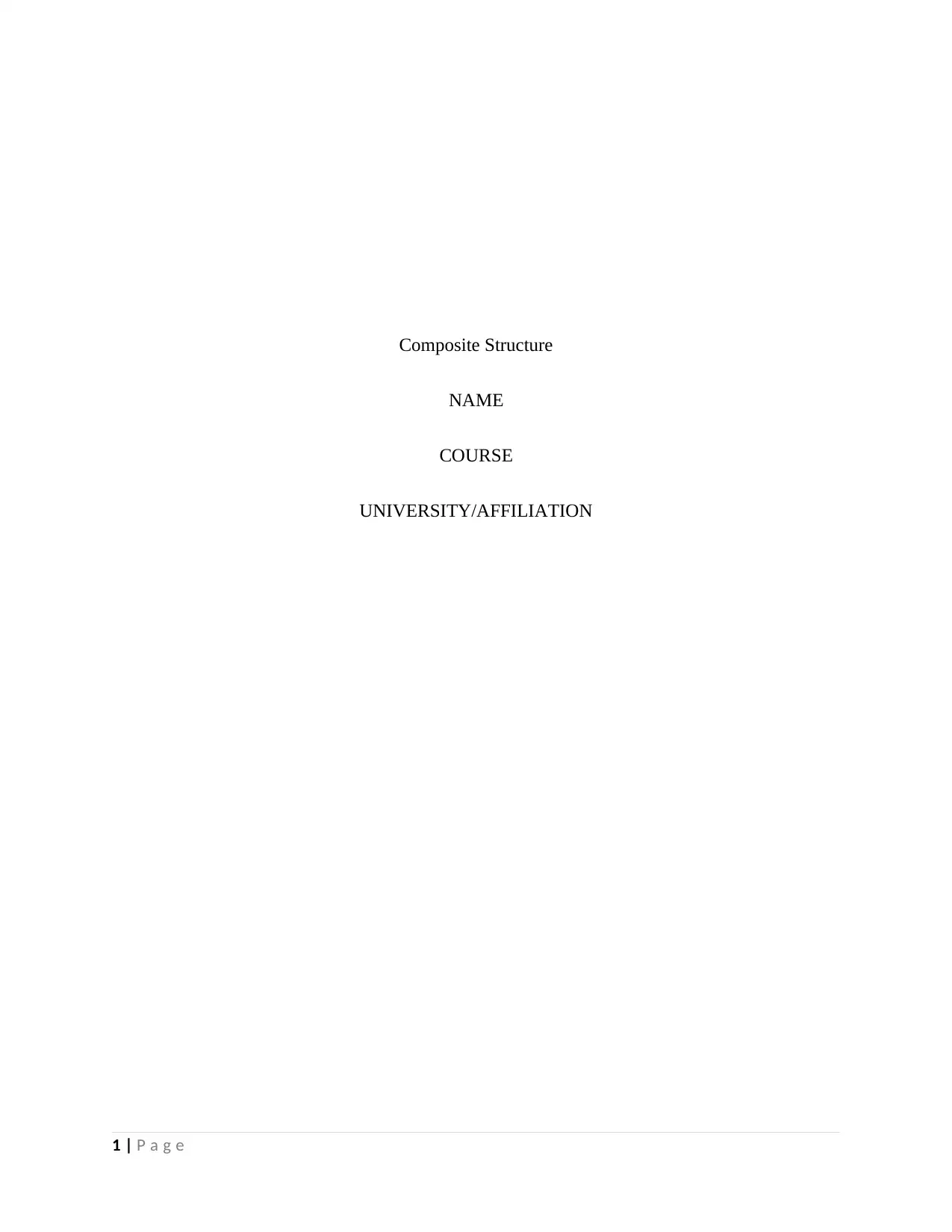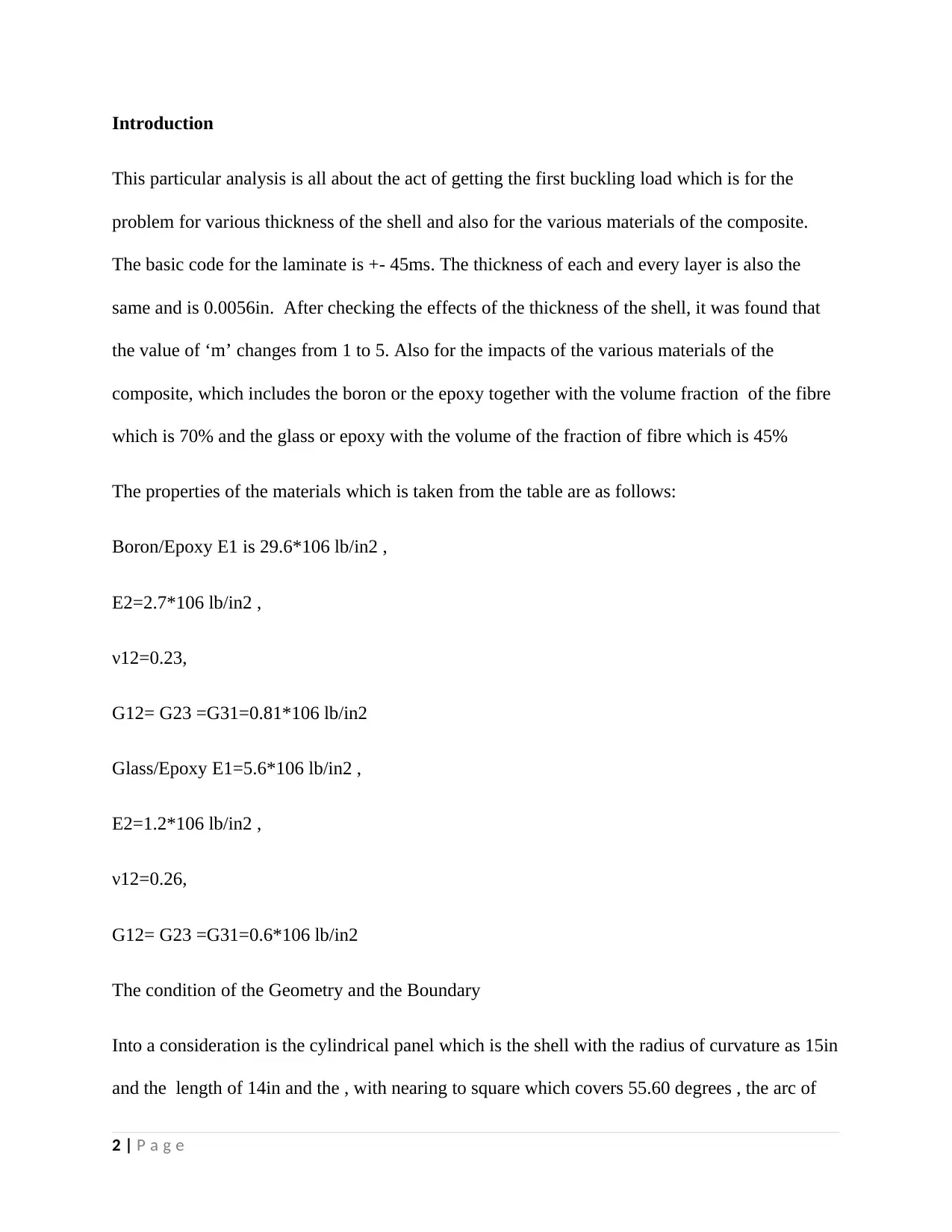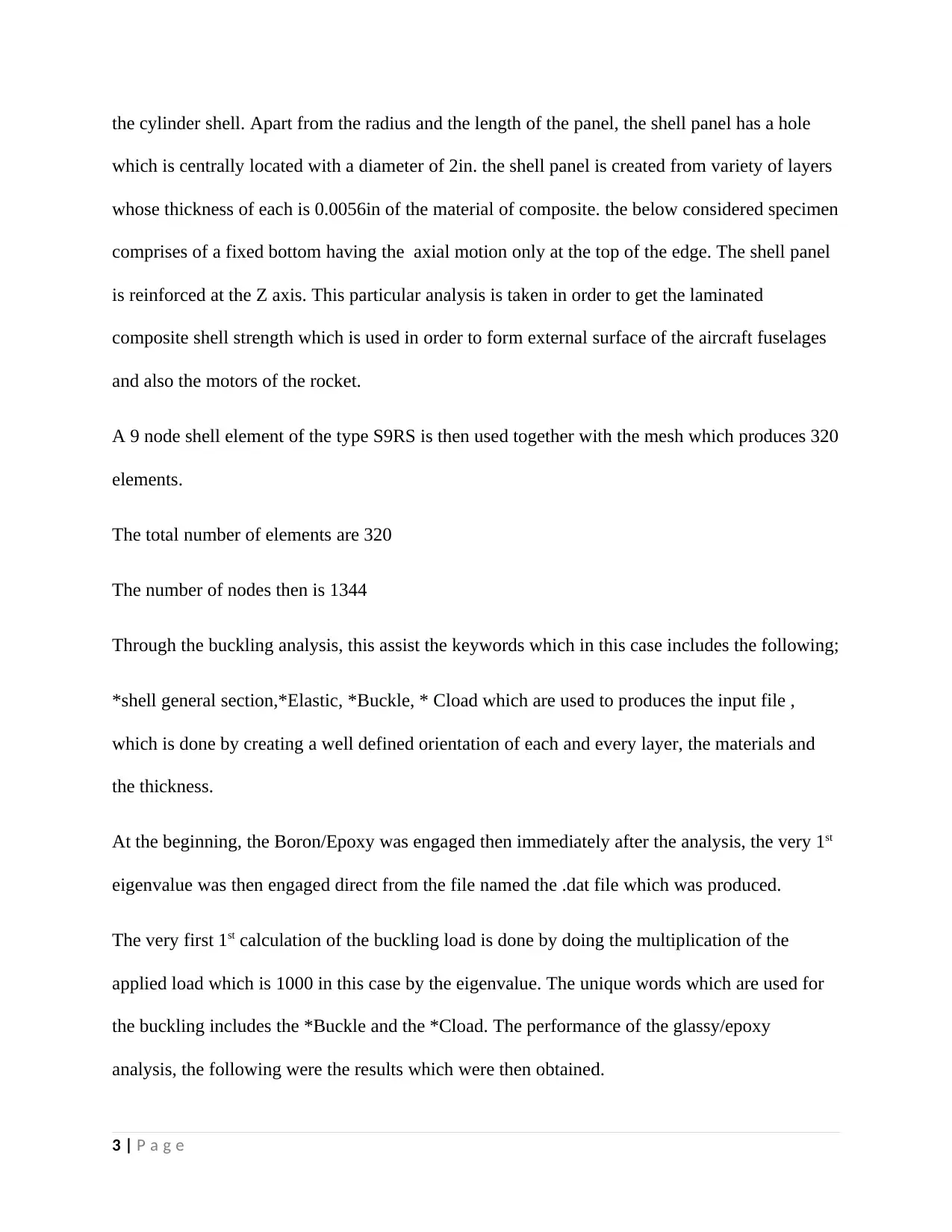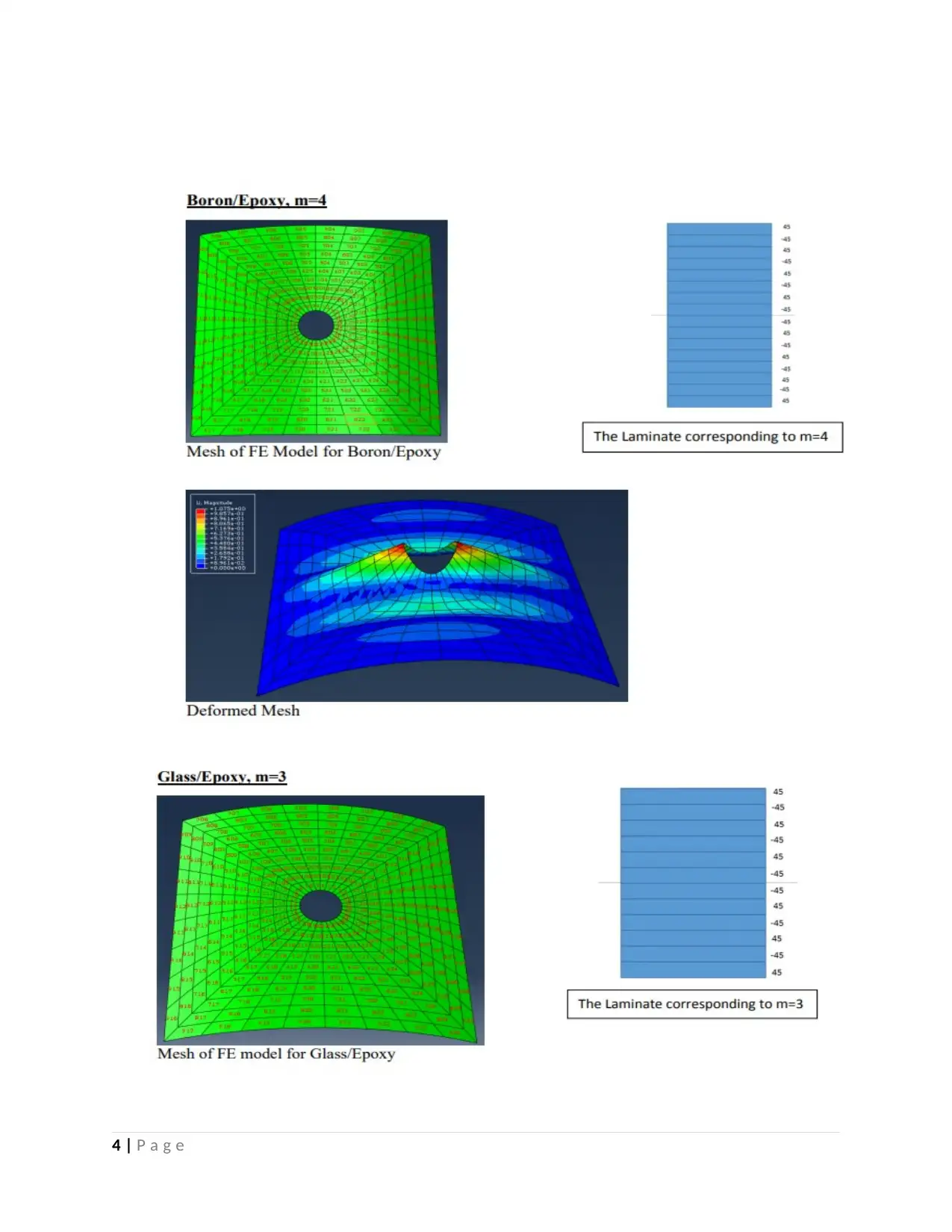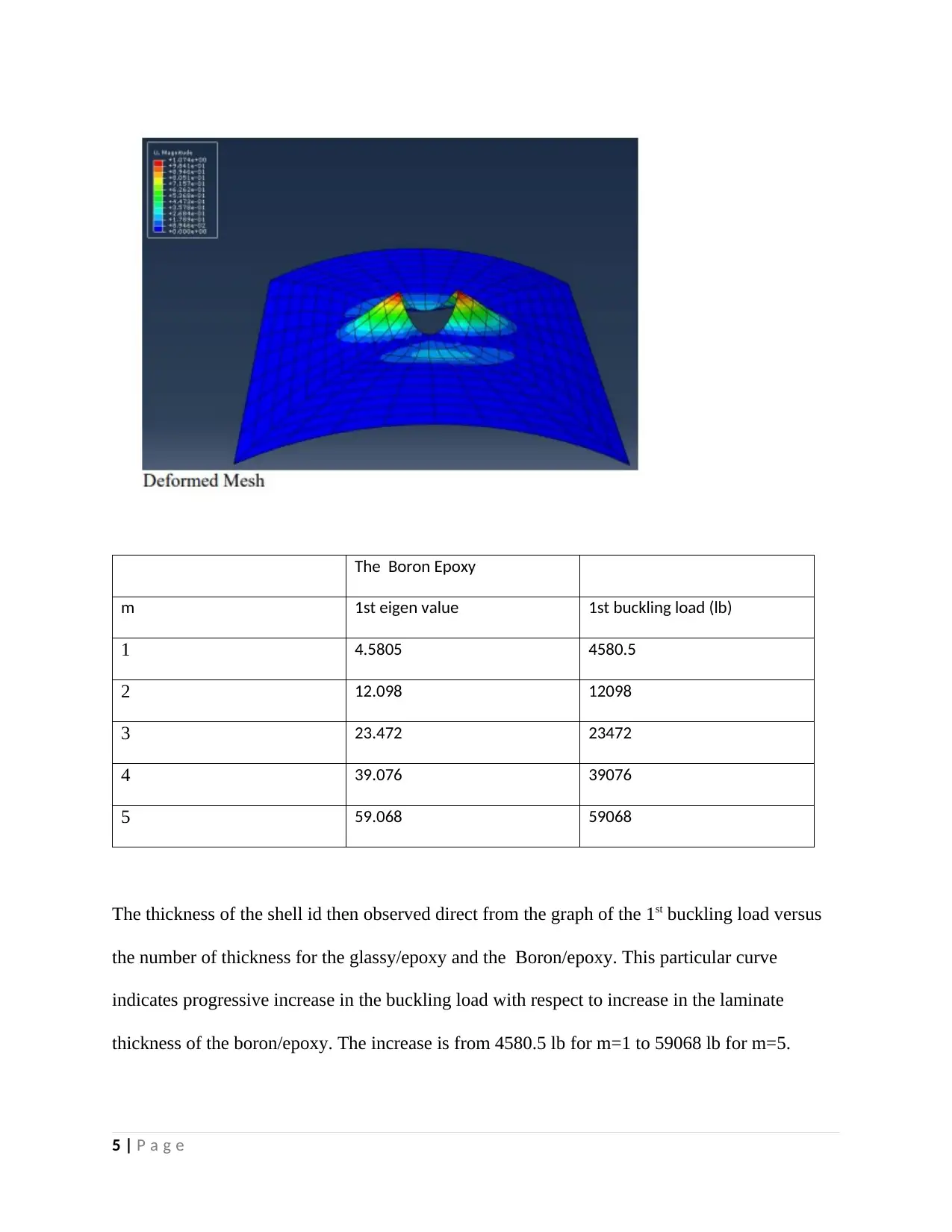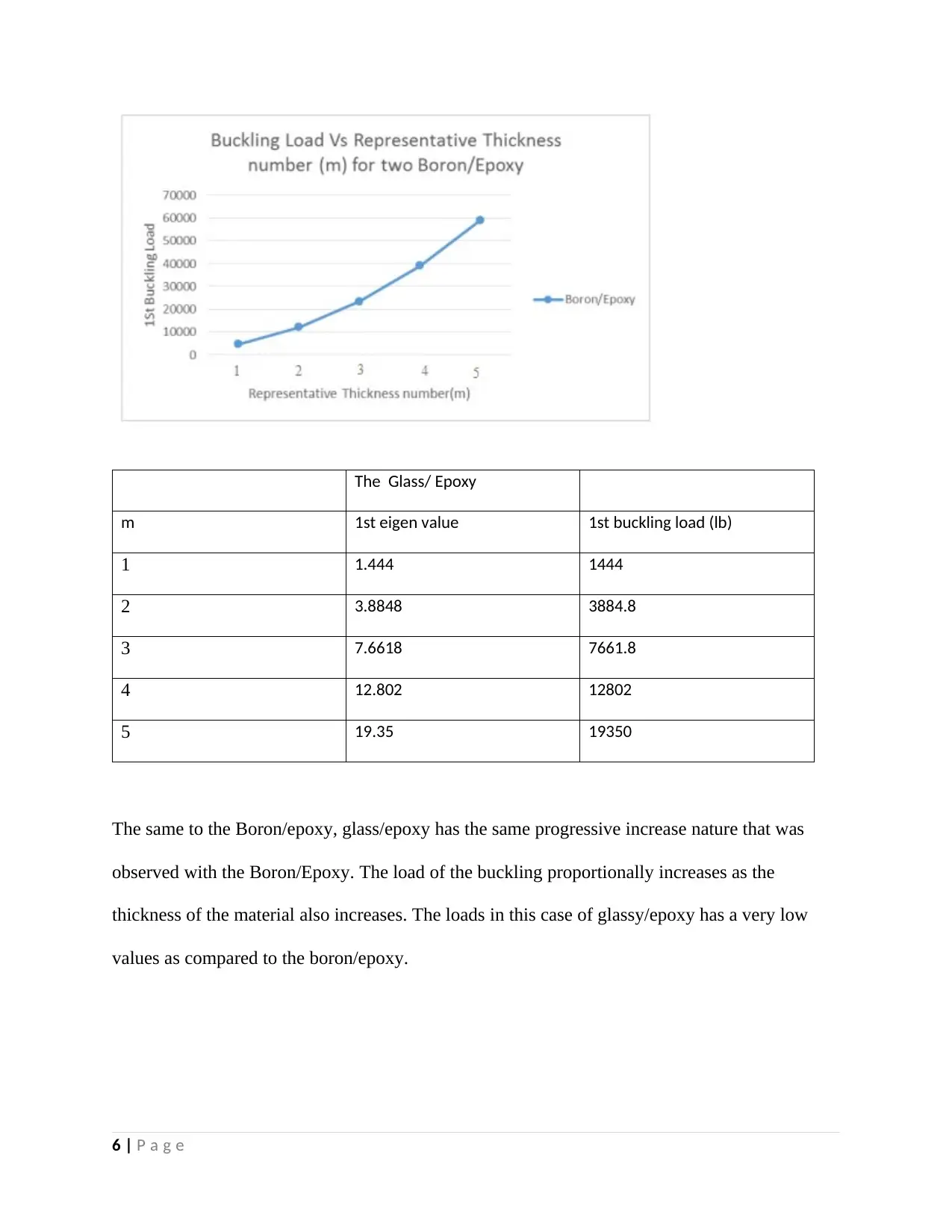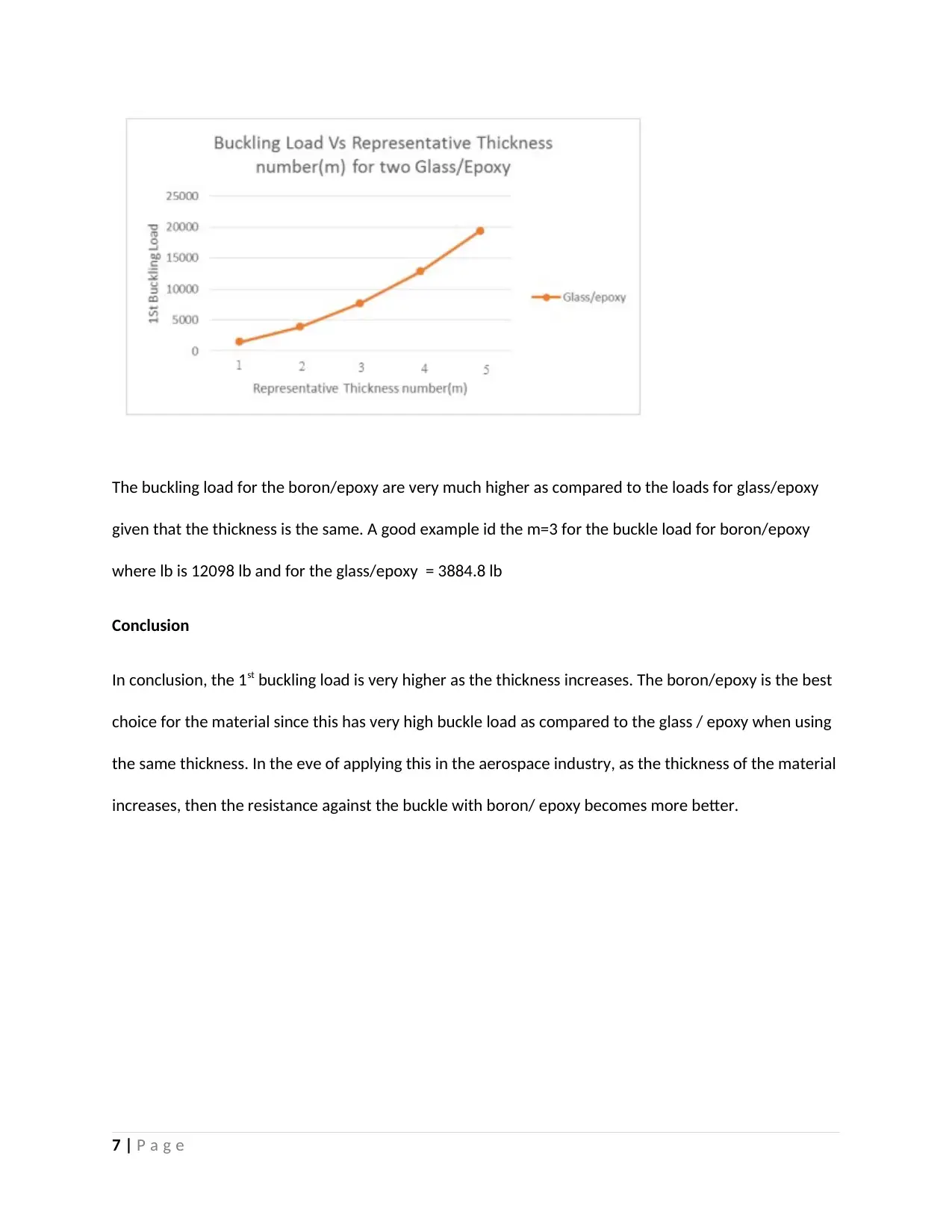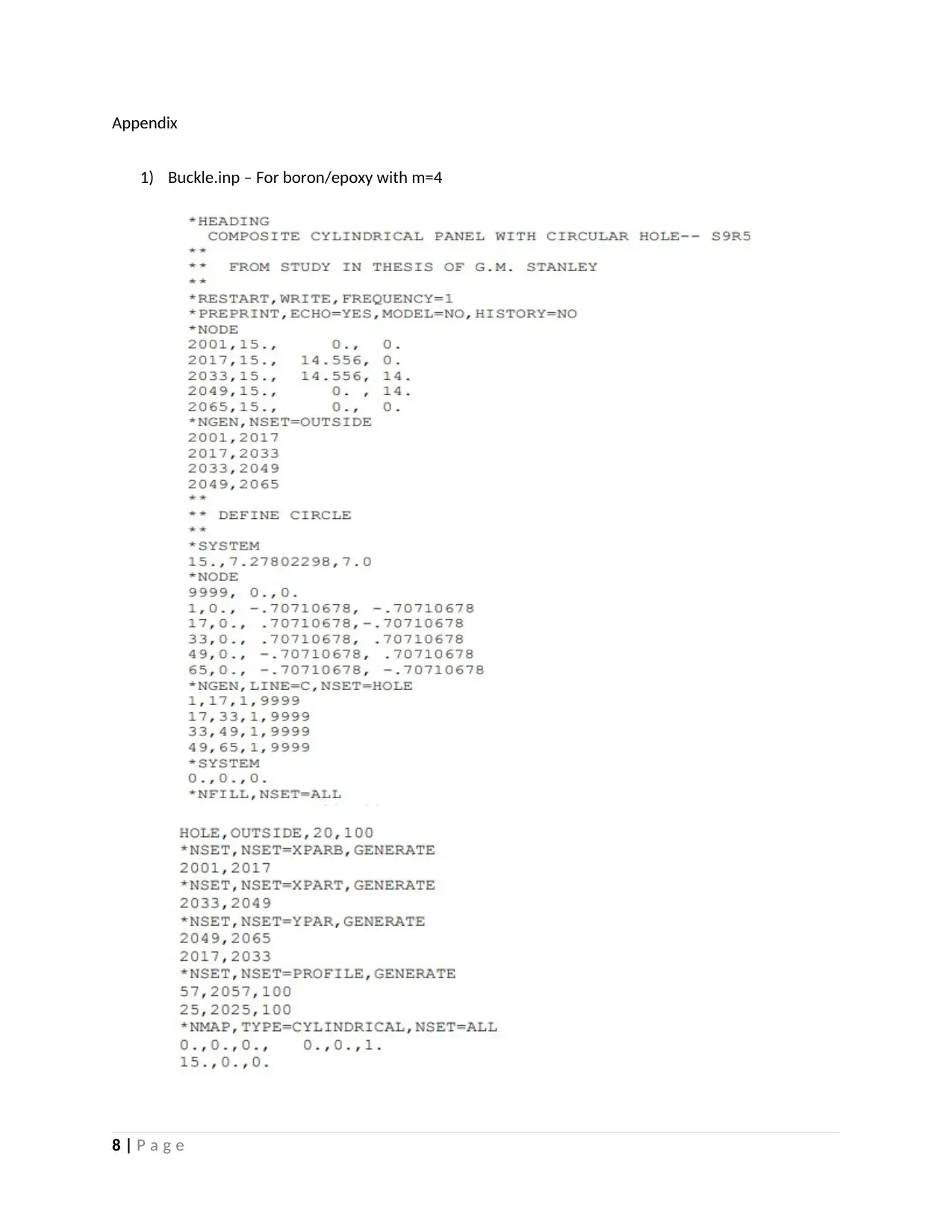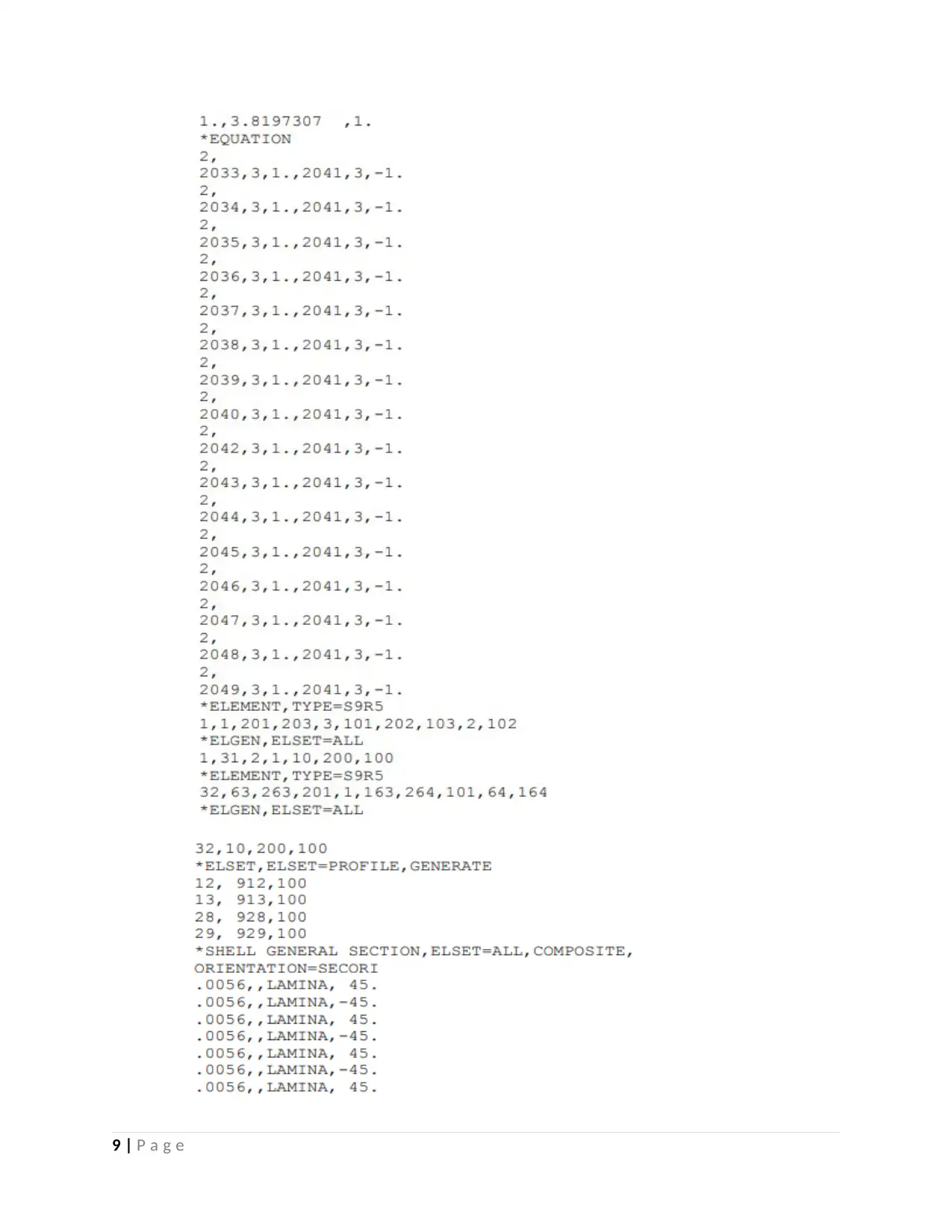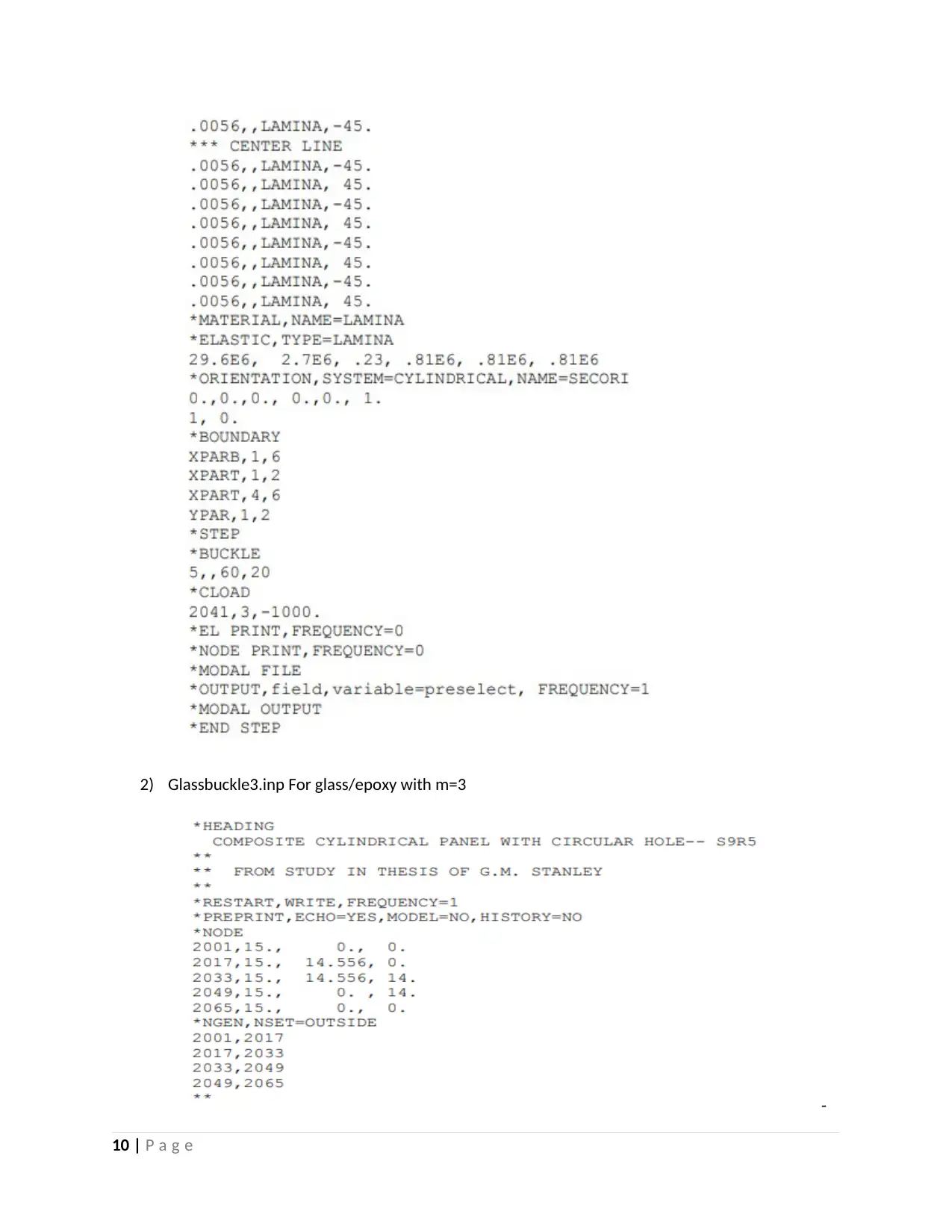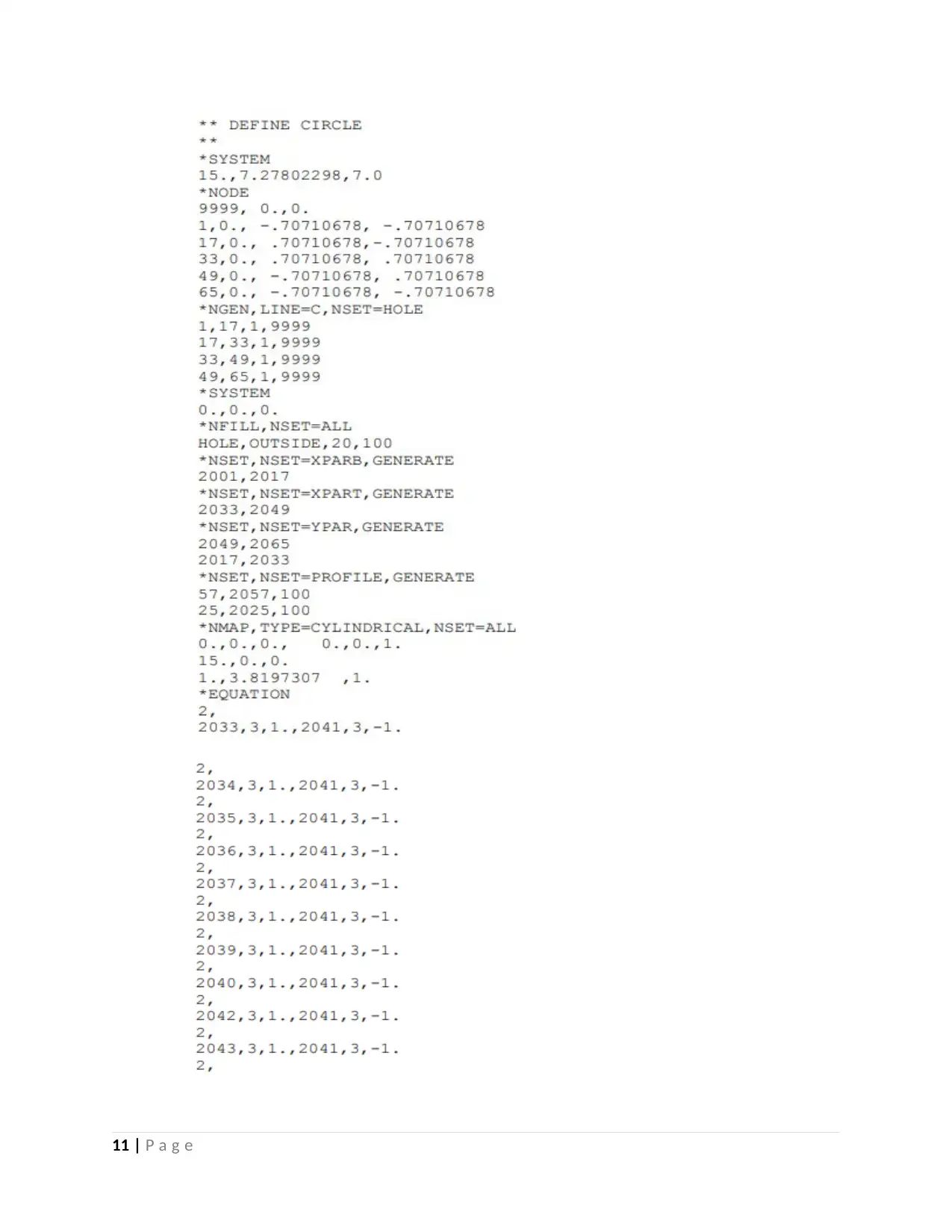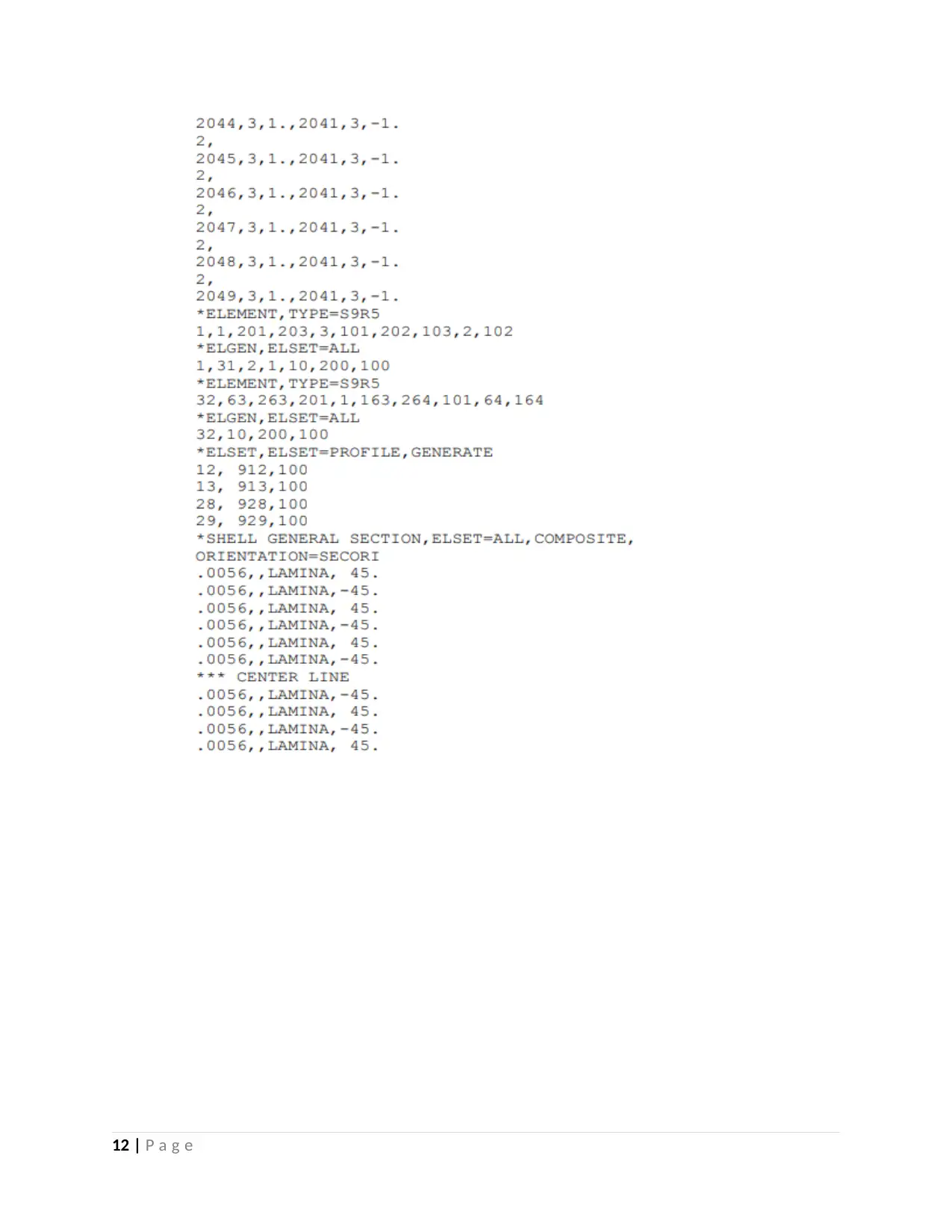MEC4446 Finite Element Analysis: Composite Shell Buckling Report
VerifiedAdded on 2023/06/12
|13
|902
|216
Report
AI Summary
This report presents an analysis of the buckling behavior of a composite cylindrical panel with a circular hole, focusing on determining the first buckling load for various shell thicknesses and composite materials (Boron/Epoxy and Glass/Epoxy). The laminate code used is +-45ms, with each layer having a thickness of 0.0056 inches. The study investigates the effects of varying the number of layers ('m' from 1 to 5) and compares the buckling loads for Boron/Epoxy (70% fiber volume fraction) and Glass/Epoxy (45% fiber volume fraction). The geometry considered is a cylindrical panel with a radius of 15 inches and a length of 14 inches, featuring a centrally located 2-inch diameter hole. The analysis employs a 9-node shell element (S9RS) with a mesh producing 320 elements and 1344 nodes. The results show a progressive increase in buckling load with increasing laminate thickness for both materials, with Boron/Epoxy exhibiting significantly higher buckling loads compared to Glass/Epoxy for the same thickness, making it a better choice for aerospace applications requiring high buckling resistance.
1 out of 13
